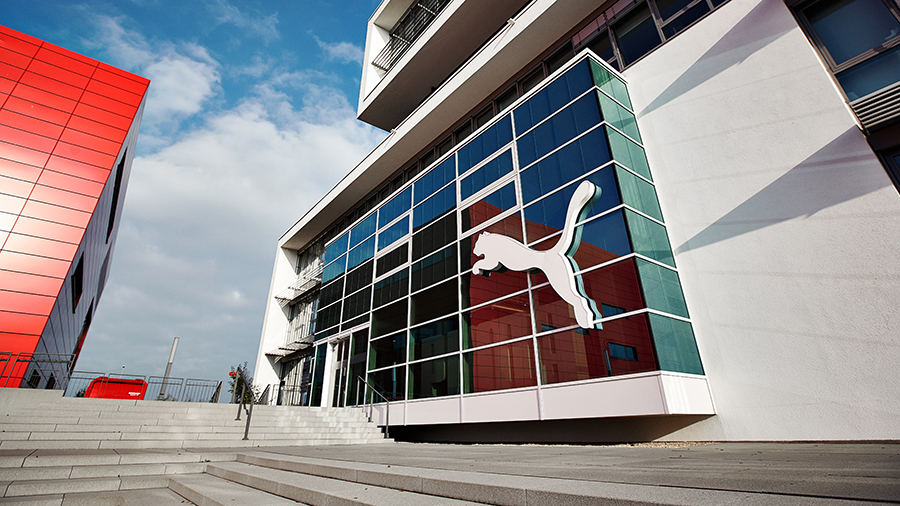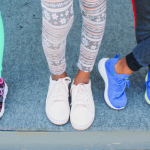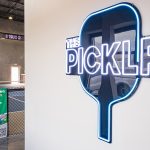Puma’s earnings fell 9.6 percent due to currency headwinds, weakness in North America and higher expenses. However, higher-than-expected revenues due to momentum in Europe, a recovery in China as well as stronger-than-expected margins led the German-based company to reiterate its guidance for the year.
Arne Freundt, CEO of Puma SE, said, “While the market continues to experience significant macroeconomic headwinds and 2023 remains a transition year, we outgrew the market with a currency-adjusted sales growth of 6 percent and delivered an EBIT of €236 million – both fully in line with expectations. We once again demonstrated our sustained brand momentum and gained market share. We remain fully on track to achieve our full-year guidance.
“In the remainder of the year, we will deliver a lot of exciting product newness to the market and celebrate the biggest brand moments of this year. Our strong partnerships with our retailers, athletes and suppliers, supported by the fastest and most agile team in the industry, were again crucial for our success.”
Third Quarter 2023
Currency-adjusted sales increased by 6.0 percent to €2,311.1 million ($2.4 bn), while currency effects had a negative impact on sales in euro terms (-1.8 percent reported). The EMEA region recorded a sales growth of 9.9 percent (ca) to €1,020.7 million ($1.08 bn), which was driven by strong performance in EEMEA. The Asia/Pacific region grew by 4.6 percent (ca) to €435.9 million ($463 mm), supported by a continued trend of recovery in Greater China following the market reopening, as well as ongoing growth in Japan and India. Sales in the Americas region increased by 2.5 percent (ca) to €854.6 million ($907 mm). In line with expectations and the year-to-date trend, North America declined due to macroeconomic headwinds and Puma’s relative dependency on the off-price Wholesale business, while Latin America continued to show strong growth. The Puma Group continues to benefit from its geographic diversification of the business.
Puma’s Wholesale business increased by 3.1 percent (ca) to €1,786.3 million ($1.9 bn). This is fully in line with the objective of being the best partner for retailers while working with them to manage elevated inventory levels in the marketplace. DTC business was up by 17.4 percent (ca) to €524.9 million ($557 mm). Sales in owned & operated retail stores increased 21.8 percent (ca) and e-commerce was up 8.3 percent (ca). The ongoing strong growth in DTC was supported by continued brand momentum, retail store expansion and improved store productivity. This resulted in an increased DTC share of 22.7 percent (Q3 2022: 20.8 percent).
Sales in Footwear were up 11.3 percent (ca), driven by continued strong demand for our Football, Basketball and Performance Running categories as well as for Sportstyle. Sales in Apparel declined 0.5 percent (ca), while Accessories grew 4.2 percent (ca).
The gross profit margin increased by 30 basis points to 47.1 percent (Q3 2022: 46.8 percent). Analysts had expected margins to fall. In line with Puma’s expectations, currency effects became a strong headwind year-on-year and further intensified compared to last quarter. However, this was more than offset by tailwinds from sourcing, freight, price adjustments, geographical, and distribution channel mix effects. These accomplishments resulted in an improved gross profit margin.
Operating expenses (OPEX) increased by 1.2 percent to €863.7 million ($917 mm) (Q3 2022: €853.2 million). The moderate increase was driven by continued growth in the DTC channel and investments in marketing, while continued cost discipline and currency effects were favorable. As a result, the OPEX ratio increased by 120 basis points to 37.4 percent (Q3 2022: 36.2 percent).
The operating result (EBIT) decreased by 8.3 percent to €236.3 million ($251 mm) (Q3 2022: €257.7 million). While an improved gross profit margin had a positive impact, the overall EBIT decreased due to currency effects. The EBIT margin came in at 10.2 percent (Q3 2022: 10.9 percent).
Consequently, net income decreased by 10.0 percent to €131.7 million ($140 mm) (Q3 2022: €146.4 million) and earnings per share amounted to €0.88 (Q3 2022: €0.98).
Nine Months 2023
Sales increased by 10.3 percent (ca) to €6,619.5 million ($7 bn) (+5.6 percent reported).
The EMEA region led the growth with a sales increase of 19.1 percent (ca), followed by the Asia/Pacific region with a sales increase of 18.0 percent (ca). Sales in the Americas region declined 1.0 percent (ca) due to macroeconomic headwinds, high inventory levels in the trade and Puma’s relative dependency on the off-price Wholesale business in the U.S..
The Wholesale business was up 7.3 percent (ca) to €5,113.7 million ($5.4 bn) and the Direct-to-Consumer (DTC) business increased by 22.0 percent (ca) to €1,505.8 million ($1.6 bn). Sales in owned & operated retail stores increased 23.2 percent (ca) and e-commerce increased 19.5 percent (ca). This resulted in an increased DTC share of 22.7 percent (9M 2022: 20.9 percent).
Footwear continued to lead the growth with 19.0 percent (ca), while Apparel and Accessories grew moderately and were up 1.6 percent (ca) and 1.8 percent (ca) respectively.
The gross profit margin decreased by 60 basis points to 46.2 percent (9M 2022: 46.8 percent). Unfavorable currency effects, industry-wide promotional activity and higher sourcing and freight costs had a negative impact on the gross profit margin. However, the negative effects were partially offset by price adjustments and a favorable geographical and distribution channel mix.
Operating expenses (OPEX) increased by 8.4 percent to €2,555.5 million ($2.7 bn) (9M 2022: €2,357.3 million). The increase was driven by sales-related distribution and other variable costs, the growth of its DTC channel and higher investments in marketing. This development was partially offset by operating leverage in other cost areas and favorable currency effects. The OPEX ratio increased by 100 basis points to 38.6 percent (9M 2022: 37.6 percent).
The operating result (EBIT) decreased by 12.1 percent to €527.2 million ($560 mm) (9M 2022: €600.1 million) due to an unfavorable gross profit margin and higher operating expenses, which resulted in an EBIT margin of 8.0 percent (9M 2022: 9.6 percent).
Consequently, net income decreased by 13.6 percent to €304.0 million ($323 mm) (9M 2022: €352.1 million) and the earnings per share amounted to €2.03 (9M 2022: €2.35).
Working Capital
The working capital increased by 34.0 percent to €1,794.9 million ($1.9 bn) (September 30, 2022: €1,339.0 million). Inventories were down by 20.3 percent to an appropriate level of €1,874.1 million ($2 bn) (September 30, 2022: €2,350.2 million). This development is the result of previously taken measures to rightsize inventories and is also supported by last year’s high comparative base. Trade receivables increased by 12.9 percent to €1,457.3 million ($1.55 bn) (September 30, 2022: €1,290.3 million). On the liabilities side, trade payables decreased by 32.0 percent to €1,230.1 million ($1.31 bn) (September 30, 2022: €1,810.2 million).
Outlook 2023
Puma said, “In the first nine months of the year, Puma delivered double-digit top-line growth and EBIT in line with expectations, based on continued strong brand momentum, exciting product launches and strong partnerships along the value chain with athletes, retailers and suppliers. Sustained demand for Puma products, supported by operational agility, led to a further normalization of Puma inventory levels, in line with expectations.
“While remaining fully focused on its controlables, Puma continues to operate in an increasingly challenging geopolitical and macroeconomic environment. The recent conflict in the Middle East, the war in Ukraine, persistent inflation and the risk of recession are weighing on consumer sentiment, resulting in volatile demand in the retail sector.
“In the context of the above-mentioned environment and taking into consideration Puma’s strong sales growth in the first nine months of the year, the company confirms currency-adjusted sales growth in the high single-digit percentage range for the financial year 2023. In line with the previous outlook for 2023, Puma expects an unchanged operating result (EBIT) in the range of €590 million to €670 million and a respective change in net income. Puma continues to expect a strong improvement in profitability in the fourth quarter, mainly driven by a significant gross margin improvement due to lower sourcing and freight costs as well as fewer promotional activities.
“As in previous years, Puma will continue to focus on overcoming short-term challenges without compromising the brand’s mid- and long-term momentum, prioritizing sales growth and market share gains over short-term profitability.”
Photo courtesy Puma














